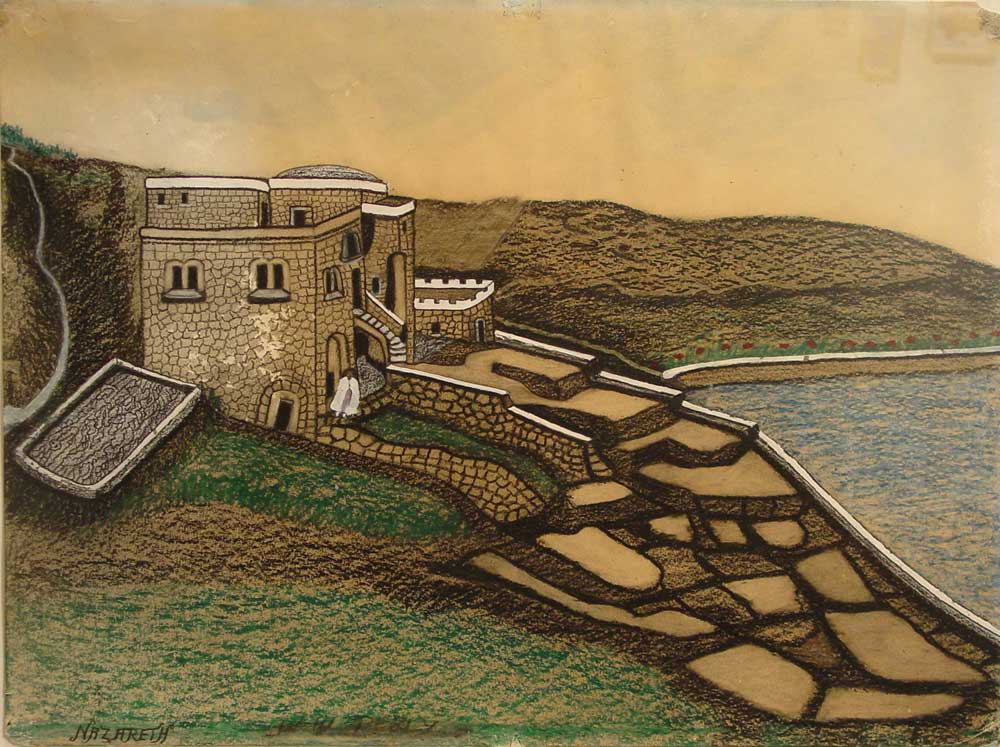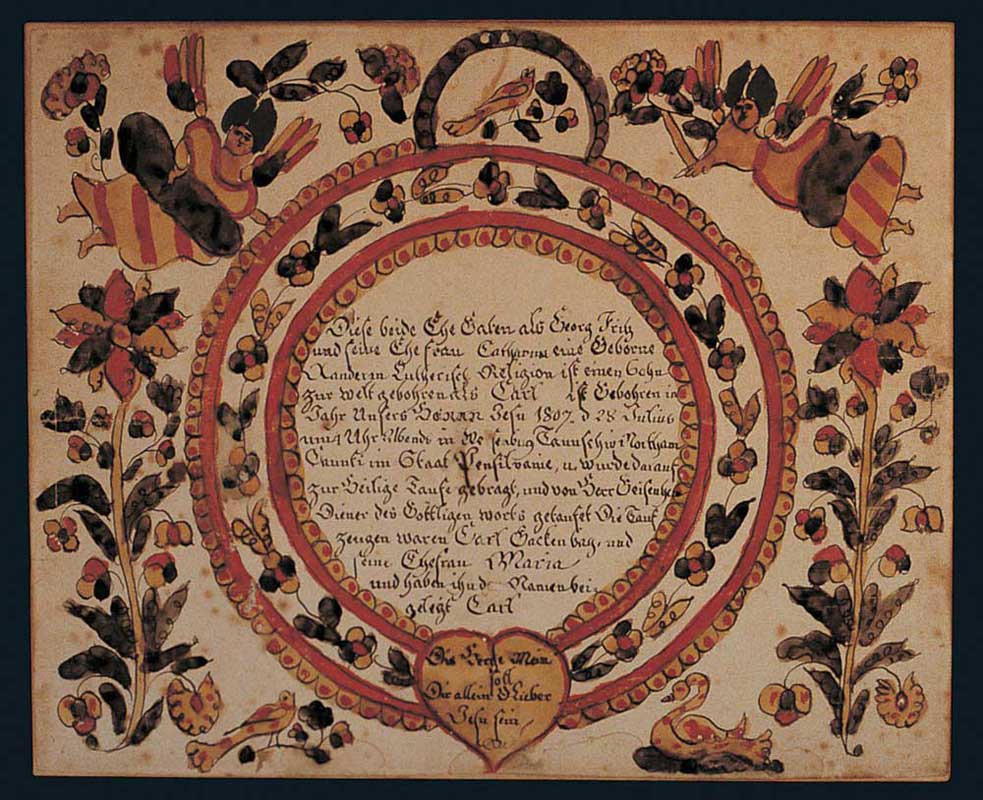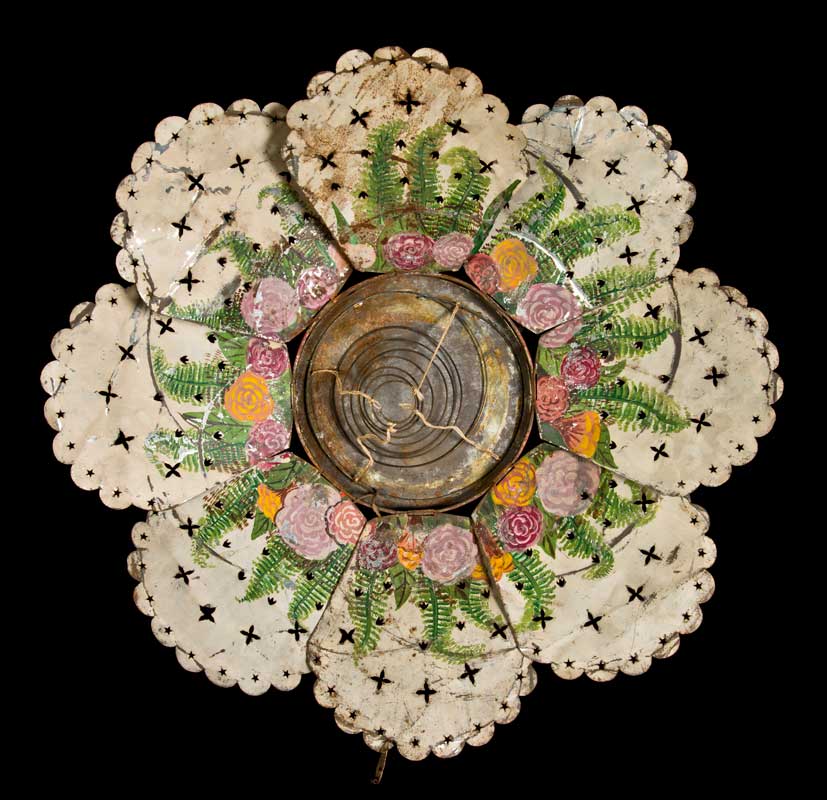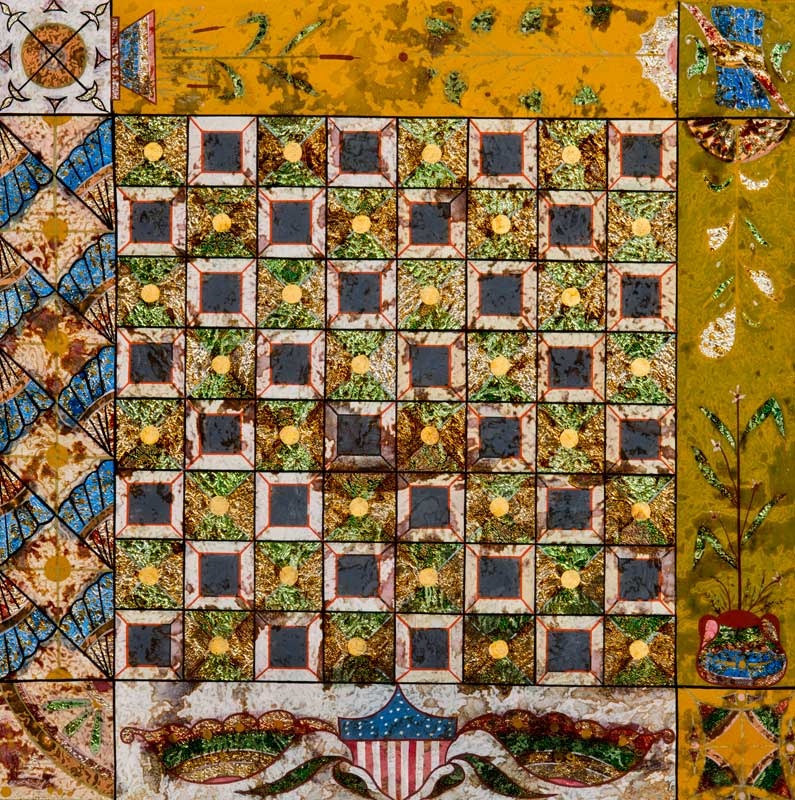THREE CHILDREN OF HENRY JOSLEN CARTER
Ammi Phillips (1788–1865)




Recent gifts to the American Folk Art Museum, on view June 11–September 22, 2013.
The exhibition is sponsored in part by Joyce Berger Cowin, public funds from the New York City Department of Cultural Affairs in partnership with the City Council, the Ford Foundation, the Robert Lehman Foundation, the David Davies and Jack Weeden Fund for Exhibitions, and Laura and Richard Parsons. Lectures and symposia are supported in part by an award from the National Endowment for the Arts.

Rising Star Variation Quilt
Elsey A. Halstead (1830–1850)
Minisink (now Middletown), New York
Dated March 23, 1848
Cotton
100 x 85 in.
Photo by Gavin Ashworth
American Folk Art Museum, gift of Kathryn Trotta Kane and family in memory of our beloved grandmother Margaret Halstead Minch. May an appreciation of the love, beauty, and hard work that went into this quilt continue to inspire future generations. We sincerely hope that others will experience the same joy the quilt has given our family over many years., 2012.16.1
This extraordinary Rising Star Variation quilt, recently gifted to the museum by a descendant of the quiltmaker, was discovered during the museum’s New York Quilt Project, an ambitious statewide quilt documentation effort initiated in 1985. Over a period of twenty-one months more than six thousand quilts were examined and recorded in forty-five documentation days held in counties around the state. Stars, in all their variety, were among the most prevalent patterns seen. This is one of around twenty superlative examples that were highlighted in the museum’s exhibition “New York Beauties: Quilts from the Empire State” (1994). The field of spinning compass stars alternates with Lemoyne Stars, and is surrounded by a border of appliquéd trees. Such border motifs have a strong association with New York State textiles, particularly the blue-and-white fancy jacquard-woven coverlets from the 1820s and 1830s that feature borders of weeping willows and other trees. The quiltmaker, Elsey Halstead, meticulously cross-stitched her name, the location, and the date on the front of the quilt.

Tambourine Flower
Artist unidentified
United States
c. 1930
Paint on tin
10 x 27 in.
Photo by Gavin Ashworth
American Folk Art Museum, gift of Nancy Karlins Thoman in memory of Herbert Waide Hemphill Jr., 2012.9.1
The history of this unique embellished tambourine is obscure, though the percussion instrument itself is American-made and dates to around 1930. It is ringed by cut-tin petals with scalloped edges that have been pierced with stars and crosses and painted with flowers and leaves. The petals are hinged so that they fold onto the tambourine when not in “bloom.” This act of folding and unfolding may be related to a musical performance format of the period. This was the height of burlesque, for instance, which often involved coquettish hiding and revealing.

The Who
James Lloyd (1905–1974)
Great Britain
1970s
Gouache on paper
21 3/4 x 15 1/2 in.
American Folk Art Museum, gift of Helen and Jack Bershad, 2012.20.9
Photo courtesy Fleisher/Ollman Gallery, Philadelphia
Before he started making art in a dedicated fashion, the English artist James Lloyd worked variously as a farmer, laborer, bus conductor, and policeman, among other occupations. In 1964 he became the unlikely subject of a television documentary by filmmaker Ken Russell, The Dotty World of James Lloyd. The title referred to the painstaking pointillist technique that Lloyd devised after realizing that reproductions of his favorite paintings by such artists as J.M.W. Turner and John Constable were composed of tiny dots of color in the chromolithographic printing process. He developed his own method of minute dot painting using brushes with just a few hairs to make verdant scenes of his English countryside and rural life. Working at his kitchen table, surrounded by his large family, Lloyd joyously and meticulously recorded the nostalgic themes that were significant to him. In this example, though, the artist celebrates the famous rock band The Who through his almost obsessive accretion of depth and texture through hand-stippling.

Nazareth
Perley M. Wentworth (?–c. 1960)
California
c. 1950s
Crayon, pencil, gouache, and watercolor on paper
18 x 24 in.
American Folk Art Museum, gift of Helen and Jack Bershad, 2012.20.1
Photo courtesy Fleisher/Ollman Gallery, Philadelphia
This mysterious drawing is typical of the mystical ambiguity Perley M. Wentworth endowed to the forty or so drawings that are known. The depiction bears some resemblance to renderings of the biblical city Nazareth, and one might conjecture that it is Jesus who is emerging from the imposing structure in fluttering white robes. Such religious themes are prevalent in the drawings that sometimes have didactic titles or texts, and often the word “imagination.” The mediumistic quality of the drawings is sympathetic with the artist’s reported process of gazing at the night sky and transcribing the images that came to him; on some of the drawings Wentworth recorded the time and day that the visions came to him. The artist himself remains as elusive as the meanings of these apocalyptic works that he created in California during the 1950s. Around that time Wentworth introduced himself to Dr. Tarmo Pasto, the psychologist who first brought recognition to the work of Martín Ramiréz. Pasto collected Wentworth’s drawings, and much of what we know about the artist today stems from their conversations. It is believed he may be the Perley Meyer Wentworth whose name appears in the Oakland telephone directory between 1955 and 1959 and who died around 1960.

Three Children of Henry Joslen Carter
Ammi Phillips (1788–1865)
Stockbridge, Massachusetts
1860
Oil on canvas
28 3/4 x 37 1/2 in.
Photo courtesy Heritage Auctions, Inc., New York
American Folk Art Museum, gift of Cynthia K. Easterling in honor of my grandmother Grace E. Carter, 2012.5.1
This is one of only a few portraits by Ammi Phillips that includes multiple subjects. It depicts the three children of Henry Joslen Carter, scion of one of the founding families of Stockbridge, Massachusetts. According to tradition, the artist painted six family members in 1860 while he recovered from an illness, sleeping in an upper floor bedroom that he also used as a studio. Phillips charged twenty-five dollars for this triple portrait and ten dollars each for three individual portraits, including a posthumous portrait of an adult cousin. The three children—Anna Electa (1845–?), John Calvin Calhoun (1846–?), and Mary Adele (1856–?)—are lovingly intertwined and bear attributes of their youth: a bird, a flower, and a sprig of strawberries. The brightly colored dresses of the girls form an ornamental contrast to the plain deep background, while their brother’s black suit is subsumed into darkness, highlighting instead his pale and patrician face. The highly enameled surface is typical of Phillips’s work from the late 1820s to the end of his career, in which he eliminated apparent brushwork and presented a crystalline clarity. According to family recollection, Anna Electa, the eldest daughter, suffered from a cleft palate, which is barely visible in this portrayal.

Game Board
Artist unidentified
United States
1889
Reverse painting and patterned foil on glass, in wood case
22 x 22 1/8 in.
American Folk Art Museum, gift of Susan and Laurence Lerner, 2012.15.8
Photo by Gavin Ashworth, New York
This beautiful checkerboard is reverse-painted on glass with a number of motifs that locate it within the last quarter of the nineteenth century. Quarter-fans, flowers, and butterflies relate strongly to the types of Japanese design elements seen broadly across the decorative arts especially following the appearance of the Japanese Pavilion at the Philadelphia Centennial Exposition. The shield of the United States, too, suggests it belongs to this era of strong patriotic feeling as the country celebrated its one hundredth birthday. It coincides with the height of popularity of the artform known as tinsel painting, which was practiced primarily by women and typically featured floral imagery. The game of checkers, itself, has ancient roots. “American” checkerboards had eight squares across, as opposed to the Canadian draughts, which typically had twelve squares.
The exhibition is sponsored in part by Joyce Berger Cowin, public funds from the New York City Department of Cultural Affairs in partnership with the City Council, the Ford Foundation, the Robert Lehman Foundation, the David Davies and Jack Weeden Fund for Exhibitions, and Laura and Richard Parsons. Lectures and symposia are supported in part by an award from the National Endowment for the Arts.